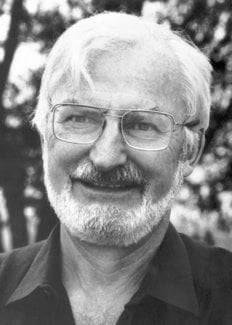Heinrich Rohrer
Biographical

I was born in Buchs, St. Gallen, Switzerland on 6.6., ’33 as the third child, half an hour after my twin sister. We were fortunate to enjoy a carefree childhood with a sound mixture of freedom, school and farm work. In 1949, the family moved to Zürich and our way of life changed from country to town. My finding to physics was rather accidental. My natural bent was towards classical languages and natural sciences, and only when I had to register at the ETH (Swiss Federal Institute of Technology) in autumn 1951, did I decide in favor of physics. In the next four years, Professors G. Busch, W. Pauli, and P. Scherrer taught me the rudiments. In autumn 1955, I started work on my Ph.D. Thesis and it was fortuitous that Jörgen Lykke Olsen trusted me to measure the length changes of superconductors at the magnetic-field-induced superconducting transition. He had already pioneered the field with measurements on the discontinuity of Young’s modulus. Following in his footsteps, I lost all respect for angstroms. The mechanical transducers were very vibration sensitive, and I learned to work after midnight, when the town was asleep. My four graduate years were a most memorable time, in a group of distinguished graduate students always receptive for fun, and including the interruptions by my basic training courses in the Swiss mountain infantry.
In summer 1961, Rose-Marie Egger became my wife, and her stabilizing influence has kept me on an even keel ever since. Our honeymoon trip led us to the United States where I spent two post-doe years working on thermal conductivity of type-II superconductors and metals in the group of Professor Bernie Serin at Rutgers University in New Jersey. Then in the summer of 1963, Professor Ambros Speiser, Director of the newly founded IBM Research Laboratory in Rüschlikon, Switzerland, made me an offer to join the physics effort there. Encouraged by Bruno Lüthi, who later became a Professor at the University of Frankfurt, and, at the time, strongly recommended the hiring of Gerd Binnig, I accepted to start in December 1963, after having responded to the call of the wild in the form of a four-month camping trip through the USA.
My first couple of years in Rüschlikon were spent studying mainly Kondo systems with magnetoresistance in pulsed magnetic fields. End of the sixties, Keith Blazey interested me to work on GdAlO3, an antiferromagnet on which he had done optic experiments. This started a fruitful cooperation on magnetic phase diagrams, which eventually brought me into the field of critical phenomena. Encouraged by K. Alex Müller, who had pioneered the critical-phenomena effort in our Laboratory, I focused on the bicritical and tetracritical behavior and finally on the random-field problem. These were most enjoyable years, during which so many patient colleagues taught me physics. I left them with some regret, when I ventured with Gerd to discover new shores. We found them. Thank you, Gerd.
In 1974/75, I spent a sabbatical year with Professor Vince Jaccarino and Dr. Alan King at the University of California in Santa Barbara, to get a taste of nuclear magnetic resonance. We solved a specific problem on the bicritical point of MnF2, their home-base material. We traded experience, NMR and critical phenomena. Rose-Marie and I also took the opportunity at the beginning and end of my sabbatical to show the USA to our two daughters, Doris and Ellen, on two extended camping trips from coast to coast.
In all the years with IBM Research, I have especially appreciated the freedom to pursue the activities I found interesting, and greatly enjoyed the stimulus, collegial cooperation, frankness, and intellectual generosity of two scientific communities, namely, in superconductivity and critical phenomena. I should also like to take this opportunity to thank the many, many friends, teachers, and seniors who have contributed towards my scientific career in any way whatsoever, and most particularly my mother for her unstinting aid and assistance, especially when times were difficult.
This autobiography/biography was written at the time of the award and first published in the book series Les Prix Nobel. It was later edited and republished in Nobel Lectures. To cite this document, always state the source as shown above.
Heinrich Rohrer died on 16 May 2013.
Nobel Prizes and laureates
Six prizes were awarded for achievements that have conferred the greatest benefit to humankind. The 14 laureates' work and discoveries range from quantum tunnelling to promoting democratic rights.
See them all presented here.
